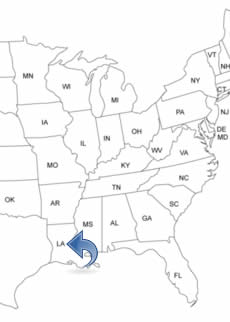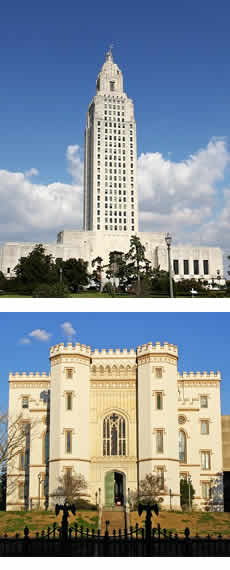LOUISIANA PEOPLE SEARCH!
- ✔ Contact Info
- ✔ Phone Numbers
- ✔ Criminal Records
- ✔ Income Info
- ✔ Neighbors
- ✔ People's Age
- ✔ Property Ownership
- ✔ And Much More
Baton Rouge, Louisiana
Baton Rouge is located in the southeastern part of Louisiana. It is the capital and the second largest city in the U.S. State of Louisiana. Baton Rouge is French for "red stick". The city is proven to be one of the fastest-growing cities in the South in terms of technology. In 2009, the city was ranked as the 9th best place in the country to start a new business by CNN. The city was ranked as one of the Top 10 Places for Young Adults in 2010 by Portfolio Magazine. The ExxonMobil facility is among the world's 10 largest.
To See And To Do In Baton Rouge
- Louisiana Art and Science Museum
- Baton Rouge Zoo
- African American Museum
- Louisiana State Capitol
- Old State Capitol
- Shaw Center For The Arts
- Alligator Bayou Swamp Tours
- Mall of Louisiana
- Perkins Rowe
History Of Baton Rouge - Timeline
In 1699, French explorers discovered the area where Baton Rouge is now located. In 1719, the French constructed a fort in Baton Rouge. In 1721, records show that about 50 people lived in the new village.
In 1763, the Englishmen took over the village. But in 1779, the Spanish defeated the English and captured Baton Rouge. In 1791, one of the earliest buildings in Baton Rouge, "The Magnolia Mound Plantation House", was constructed. In 1810, the Spanish were overthrown by local settlers. In 1812, Steam-Boat traffic operated in Baton Rouge.
In 1817, Baton Rouge was incorporated and about 300 people lived in the town. In 1819, the Gazette newspaper was published. In 1822, yellow fever killed 60 people in the town and ten years later, in 1832, it killed 100 people.
In 1840, about 2,200 people lived in the city. In 1847, the Old Louisiana State Capitol was built and in 1849, the city it became Louisiana's state capital. In 1862, during the Civil War, the Union occupied Baton Rouge and the Old State Capital was destroyed by a fire.
In 1900, more than 11,200 people lived in the city. In 1909, the Standard Oil Company built a facility in the city. In 1924, the outdoor stadium "Tiger Stadium" opened. In 1925, the first number the newspaper "The Advocate" was published. In 1926, the clock tower "Memorial Tower," was completed. In 1929, the Louisiana State Capitol building was built. In 1940, the Huey P. Long Bridge opened.
In 1953 black citizens of Baton Rouge began an organized boycott of the segregated municipal bus system that would last for eight days. In 1956, the bassist and television personality "Randy Jackson" was born in the city. Today he is best known as a judge on American Idol.
In 1968, the Horace Wilkinson Bridge opened. In 1970, the Baton Rouge Zoo opened. In 1976, the Cortana Mall opened. It is the largest mall in the state of Louisiana. In 2009, the baseball stadium "Alex Box Stadium" opened.

